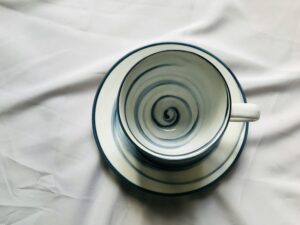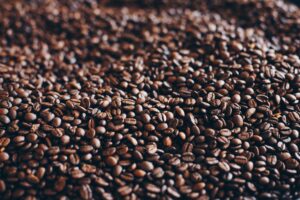If you love coffee but want to cut back on caffeine, you’ve probably seen two options: decaf coffee and half-caff coffee. Both promise less caffeine than your standard brew — but they’re not the same. In 2025, more people are turning to lower-caffeine alternatives for better sleep, less anxiety, or to avoid caffeine crashes. So, what’s the real difference, and which one is right for you?
Table of Contents
What Is Decaf Coffee?
Decaf coffee is coffee that has had about 97% or more of its caffeine removed. Depending on the method used, a typical 8-ounce cup of decaf contains 2–5 mg of caffeine compared to 80–120 mg in regular coffee.
How It’s Made
- Water processing (Swiss Water): Uses pure water to remove caffeine naturally — considered the cleanest method.
- CO₂ method: Uses carbon dioxide to extract caffeine without chemicals.
- Solvent methods: Use food-safe solvents like methylene chloride or ethyl acetate, then rinse beans thoroughly.
Who It’s For
- People sensitive to caffeine.
- Those who want to enjoy coffee late in the day without affecting sleep.
- Pregnant individuals or anyone limiting caffeine for health reasons.
What Is Half-Caff Coffee?
Half-caff coffee is a blend of 50% regular coffee and 50% decaf, giving you about 40–60 mg of caffeine per cup — roughly half of a standard brew.
How It’s Made
- Roasters mix fully caffeinated beans with decaf beans for a balanced cup.
- Available as ground coffee, whole beans, or pods.
Who It’s For
- People who want to cut caffeine without giving it up completely.
- Those who experience mild jitters but still want an energy boost.
- Coffee drinkers who want an afternoon cup without a sleepless night.
Flavor Differences Between Decaf and Half-Caff
- Decaf coffee: Modern decaf methods preserve flavor much better than they did years ago, but decaf can still taste slightly milder or less complex than fully caffeinated coffee.
- Half-caff coffee: Tastes almost identical to regular coffee because it contains a significant amount of regular beans.
If flavor is a priority and you’re just trying to reduce caffeine, half-caff may be the better option. If you need to eliminate caffeine almost entirely, decaf is the way to go.
Health Benefits of Lower-Caffeine Options
- Less anxiety and jitters for sensitive drinkers.
- Better sleep quality when consumed later in the day.
- Reduced risk of caffeine dependence while still enjoying the ritual of coffee.
- Fewer stomach issues for people sensitive to acidic brews.
Which One Should You Choose?
- Choose decaf if: You need to avoid almost all caffeine, whether for medical, pregnancy, or sleep reasons.
- Choose half-caff if: You want to reduce caffeine gradually or still need a mild energy boost in the morning or afternoon.
- Try both: Many people start with half-caff, then transition to decaf if they want to cut caffeine even further.
Final Thoughts
The choice between decaf and half-caff coffee comes down to how much caffeine you want — and how sensitive you are to it. Both options allow you to enjoy coffee’s flavor and comfort without overloading your system. In 2025, specialty roasters are producing high-quality decaf and half-caff blends that taste just as rich as regular coffee, so you don’t have to compromise on flavor to take control of your caffeine intake.






